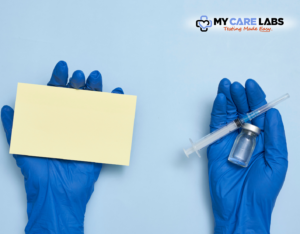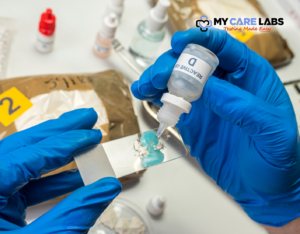Therapeutic drug monitoring (TDM) is a process that involves measuring the concentration of medication in a patient’s bloodstream to determine if the dose is adequate or needs adjustment. TDM aims to ensure that patients receive the right amount of medication to achieve optimal therapeutic outcomes while minimizing the risk of adverse effects.
Therapeutic drug monitoring is becoming increasingly important as more medications with narrow therapeutic windows are introduced into clinical practice. A narrow therapeutic window means that the difference between a drug’s effective dose and a toxic dose is relatively small. As a result, patients may experience adverse effects if the dose is too high, or the medication may be ineffective if the dose is too low.
What is the process of TDM?
The TDM process typically involves collecting a blood sample from the patient at a specific time after medication administration. The sample is then analyzed in a laboratory to determine the concentration of the drug in the patient’s bloodstream. The results are then used to adjust the dose of the medication if necessary.
Therapeutic drug monitoring or drug testing near Fremont city, CA is typically performed for medications with a high potential for toxicity, narrow therapeutic windows, or significant pharmacokinetic variability. Examples of medications that may require TDM include antibiotics, antiepileptic drugs, immunosuppressants, and antipsychotics.
Benefits of TDM
TDM offers several benefits for patients and healthcare providers. One of the most significant advantages of Therapeutic drug monitoring (TDM) is that it allows healthcare providers to tailor medication doses to individual patients based on their unique pharmacokinetic profiles. This personalized approach to medication dosing can improve therapeutic outcomes, reduce the risk of adverse effects, and decrease the likelihood of medication errors.
TDM can also help healthcare providers identify patients at increased risk of adverse effects due to drug interactions, genetic factors, or underlying medical conditions. For example, patients with impaired renal or hepatic function may require lower doses of certain medications to avoid toxicity.
In addition, TDM (Therapeutic drug monitoring) can be particularly beneficial for patients who require long-term medication therapy, such as those with chronic medical conditions or psychiatric disorders. By monitoring drug concentrations over time, healthcare providers can adjust medication doses to maintain therapeutic efficacy and prevent adverse effects.
Finally, TDM- Therapeutic drug monitoring can also help reduce healthcare costs by reducing the need for hospitalization and preventing medication-related complications that require additional medical intervention.
Limitations of TDM
While TDM offers many benefits, the approach has some limitations. One of the most significant limitations is that TDM requires specialized laboratory testing, which can be time-consuming and expensive. In addition, not all medications are amenable to TDM, and the evidence supporting the use of TDM for certain medications may be limited.
Another limitation of TDM is that it only provides information about the concentration of the drug in the patient’s bloodstream, not the drug’s activity at the site of action. For some medications, the concentration of the drug in the bloodstream may not accurately reflect its activity in the target tissue. This limitation may be particularly relevant for medications with complex pharmacokinetics, such as those metabolized by multiple pathways or with active metabolites.
Finally, TDM requires careful interpretation of the results to ensure doses are adjusted appropriately. Interpreting TDM results can be complex and requires knowledge of the drug’s pharmacokinetics, pharmacodynamics, and potential drug interactions.

Future of TDM
Despite the limitations of Therapeutic drug monitoring, the approach will become increasingly important in clinical practice in the coming years. Advances in technology are making TDM more accessible and affordable, and more medications are being developed with narrow therapeutic windows that require careful monitoring.
In addition, pharmacogenomic testing is becoming more widely available, allowing healthcare providers to identify genetic variants that may affect medication metabolism and dosing. This information can be used in conjunction with Therapeutic drug monitoring to personalize medication.
Therapeutic drug monitoring (TDM) is a service offered at My Care Labs to optimize medication dosing and ensure the safe and effective use of certain drugs. TDM involves measuring the concentration of specific medications in a patient’s blood or other bodily fluids to assess their therapeutic levels and adjust the dosage if needed. Here is an overview of the process of therapeutic drug monitoring at My Care Labs:
- Sample Collection: A healthcare professional or laboratory technician collects a blood sample from the patient. In some cases, urine or other bodily fluids may be collected for testing, depending on the medication being monitored.
- Sample Processing: The collected sample is processed in the laboratory to extract the medication or its metabolites for analysis. This may involve various techniques such as centrifugation, separation, or purification.
- Analysis: The processed sample is analyzed using appropriate techniques such as immunoassays, high-performance liquid chromatography (HPLC), or mass spectrometry. These methods help quantify the concentration of the medication or its metabolites in the patient’s sample.
- Result Interpretation: Trained professionals, such as clinical pharmacists or laboratory experts, interpret the test results based on established therapeutic ranges or guidelines for the specific medication. They compare the measured drug concentration with the optimal therapeutic range to assess the medication’s effectiveness and potential need for dosage adjustment.
- Reporting: A detailed report is generated, summarizing the test results and their interpretation. The report is made available to the healthcare provider or physician who requested the therapeutic drug monitoring. The report may include recommendations for dosage adjustments or other treatment modifications based on the test results.
- Consultation: In some cases, the healthcare provider may request a consultation with a clinical pharmacist or specialist at My Care Labs to discuss the therapeutic drug monitoring results. The consultation may involve reviewing the patient’s medical history, current medication regimen, and any potential drug interactions or adverse effects. The pharmacist or specialist can provide guidance on optimizing medication therapy based on the TDM results.
Therapeutic drug monitoring at My Care Labs aims to individualize medication regimens, improve patient outcomes, and minimize the risk of drug-related complications. The specific drugs monitored, and the frequency of monitoring may vary depending on the patient’s condition and the medications being used. It is best to consult with your healthcare provider or contact My Care Labs directly for more information on the TDM services they offer.






